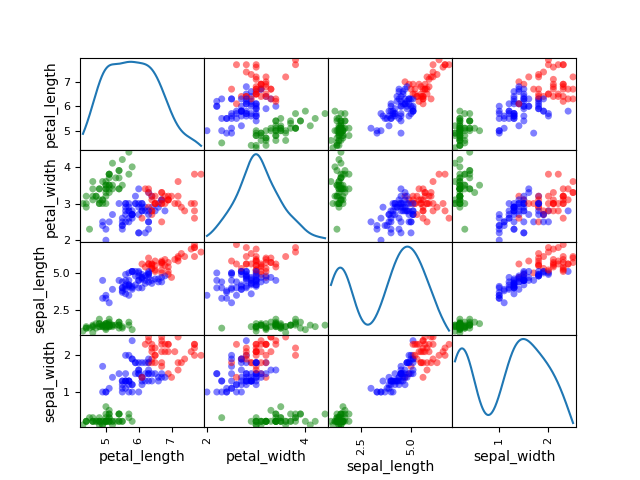Note
Go to the end to download the full example code
K-means¶
Load Iris dataset and create clusters.
Import¶
from __future__ import annotations
from numpy import array
from gemseo import configure_logger
from gemseo import create_benchmark_dataset
from gemseo.datasets.dataset import Dataset
from gemseo.mlearning import create_clustering_model
from gemseo.post.dataset.scatter_plot_matrix import ScatterMatrix
configure_logger()
<RootLogger root (INFO)>
Create dataset¶
We import the Iris benchmark dataset through the API.
iris = create_benchmark_dataset("IrisDataset")
# Extract inputs as a new dataset
data = iris.get_view(group_names=iris.PARAMETER_GROUP).to_numpy()
variables = iris.get_variable_names(iris.PARAMETER_GROUP)
variables
dataset = Dataset.from_array(data, variables)
Create clustering model¶
We know that there are three classes of Iris plants. We will thus try to identify three clusters.
model = create_clustering_model("KMeans", data=dataset, n_clusters=3)
model.learn()
model
Predict output¶
Once it is built, we can use it for prediction.
input_value = {
"sepal_length": array([4.5]),
"sepal_width": array([3.0]),
"petal_length": array([1.0]),
"petal_width": array([0.2]),
}
output_value = model.predict(input_value)
output_value
0
Plot clusters¶
Show cluster labels
dataset.add_variable("km_specy", model.labels.reshape((-1, 1)), "labels")
ScatterMatrix(dataset, kde=True, classifier="km_specy").execute(save=False, show=True)

[<Figure size 640x480 with 16 Axes>]
Total running time of the script: (0 minutes 0.577 seconds)
